I have a deep fondness for lentils due to their versatility across numerous recipes. Merging this with my affection for sprouts led me to experiment with lentil sprouts germination, a delightful discovery I highly recommend for its unexpected pleasure.

Sprouting lentils stands out as a culinary hack with a significant effort-to-reward ratio. While it might seem daunting, the process is remarkably simple, akin to a middle school science project where a bean is sprouted to demonstrate the wonders of nature.
Witnessing life sprout under basic conditions of moisture and sunlight is a truly magical experience.

Sprouted lentils offer a bounty of benefits, including enhanced nutritional value, a transformation in flavor, and varied textures, allowing for consumption in raw form.
This method elevates a common kitchen staple into a novel ingredient, enriching dishes with its unique characteristics.
The nutrients
The germination process triggers a release of stored nutrients that the young shoot requires, making the nutritional benefits more prominent than those of the dried lentils.
Lentil germination also reduces the concentration of trypsin, an enzyme found in dry lentils, that inhibits the seeds' bioavailability. Once this inhibitor is broken down, the digestive system can absorb the nutrients from the grains.
Increased protein content
Protein nutrients are made readily available during germination, making them easier to digest and absorb.
Read on: High-Protein Vegan Meals »
Higher Fiber Content
This leads to improved gut function, thus helping the rest of the body's overall health.
Cholesterol Control
Since lentil sprouts contain folate, they prevent the early onset of artery damage, which contributes to heart disease as well as increased risks of developing a stroke
Reduced inflammation
They contain polyphenols, health-promoting phytochemicals with a robust antioxidant effect, and they have an anti-inflammatory and neuroprotective effect on the nervous system.
Increased Minerals Uptake
Expanding mineral content, such as magnesium, iron, phosphorus, and zinc, boosts the over 300 biochemical reactions in your body, such as forming hemoglobin and supporting the immune system.
I understood when I read it once in a very simplistic way:
Like an egg, a seed can create life and a whole new plant or tree. When you sprout them, you unlock this potential and make them readily available to be more easily absorbed by your body.
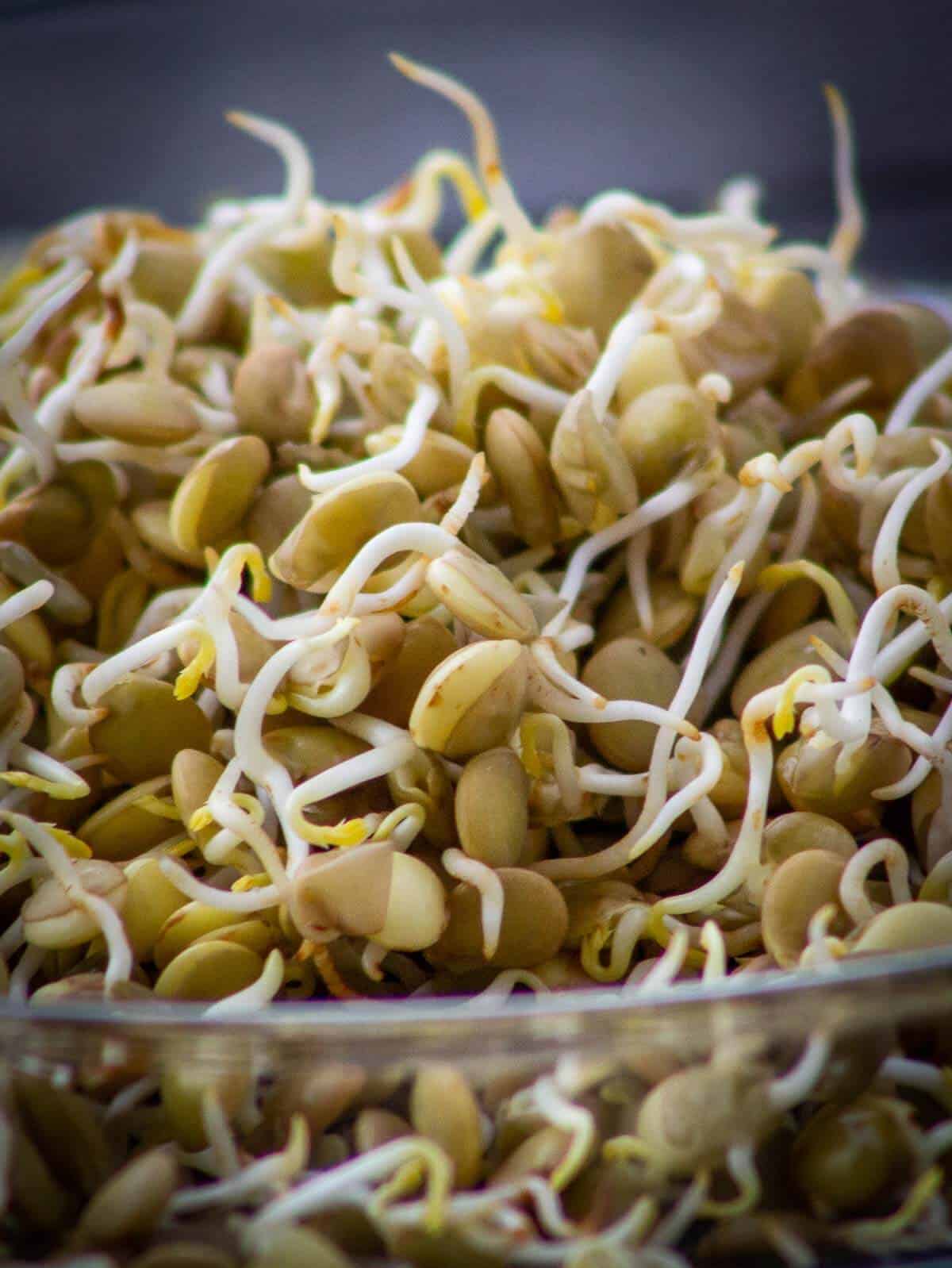
Change in Flavor
Sprouted grains exhibit a distinct taste compared to their unsprouted forms.
I appreciate the diversity sprouted ingredients add to my pantry. For instance, I enjoy incorporating sprouted lentils into both salads and soups.
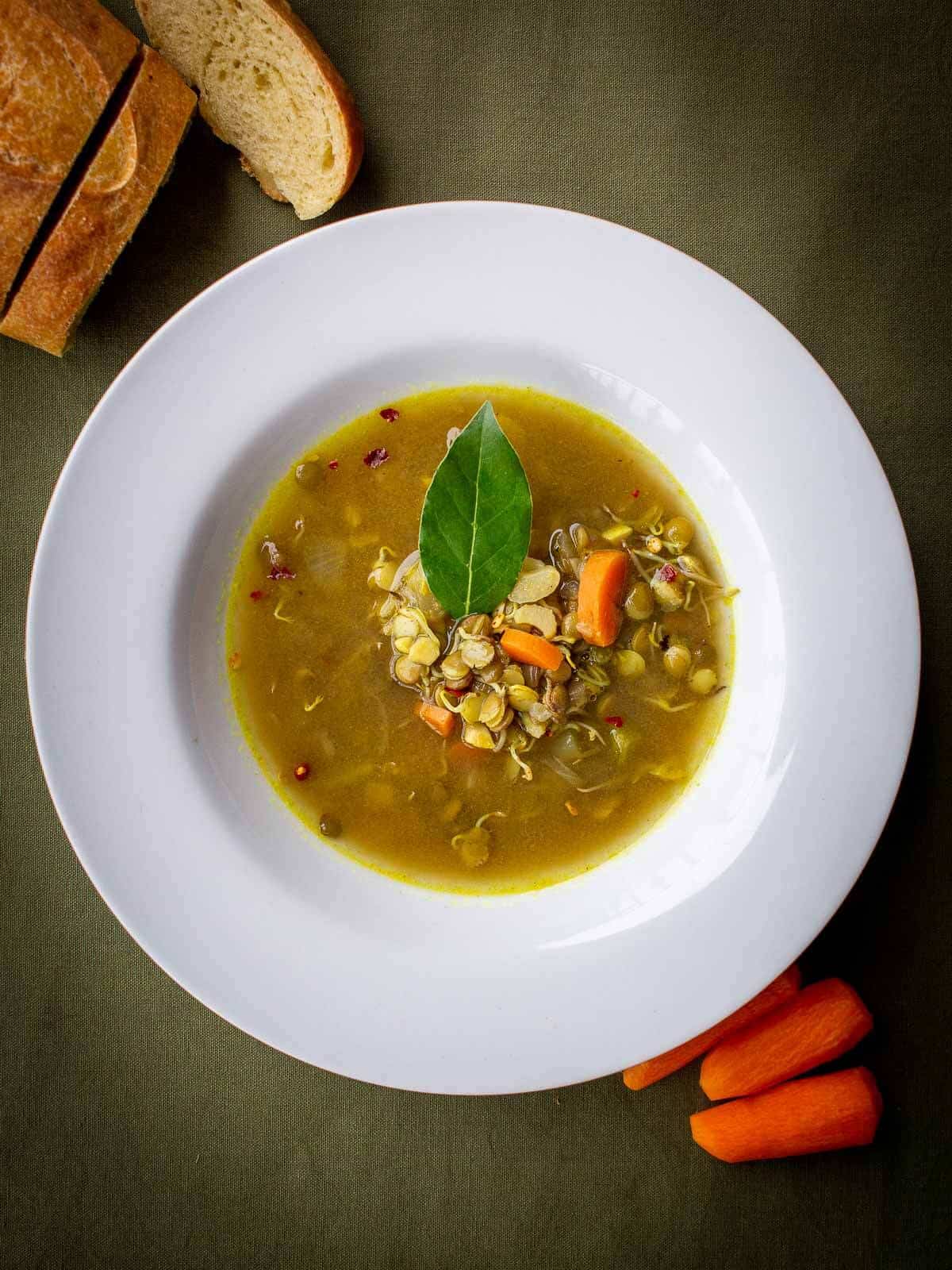
Check out our curried hearty and spicy lentil soup recipe for a delicious way to enjoy cooked sprouted lentils.
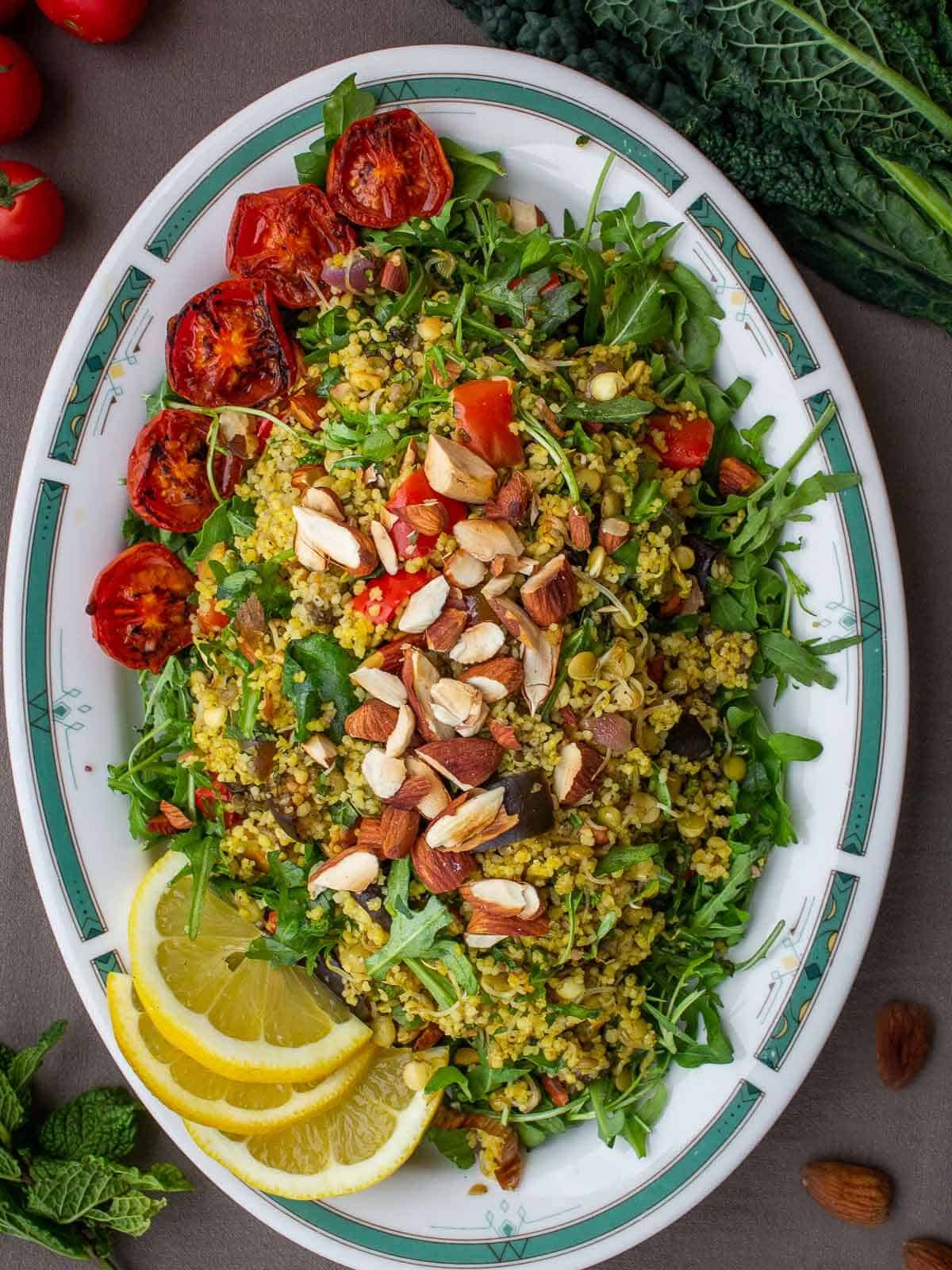
We also love adding raw sprouted lentils to salads, such as our warm couscous salad, which is complemented by fresh herbs and a mix of roasted and fresh vegetables.
You can also sprout lentils and enjoy them in a lentil sprout wrap or sandwiches, or sprinkle garlic powder and a drizzle of olive oil and enjoy with your favorite veggies.
The Texture
I find great joy in incorporating varied textures into my meals. It's a pleasant surprise to encounter a crunchy element in an unexpected place or a silky texture amidst a crisp bite.
Raw lentil sprouts bring a delightful crunch to dishes, yet become remarkably soft with just a brief cooking time of a few minutes.
The diversity in food textures serves as a fantastic tool for culinary creativity, allowing for innovative twists on traditional dishes.
Ultimately, this process transforms a familiar kitchen ingredient into something new, enhancing its flavor, texture, and nutritional profile.
What to sprout
You can sprout any lentils: brown, green, or red. You can also sprout kidney beans, mung beans, soybeans, garbanzo beans, and basically all kinds of pulses.
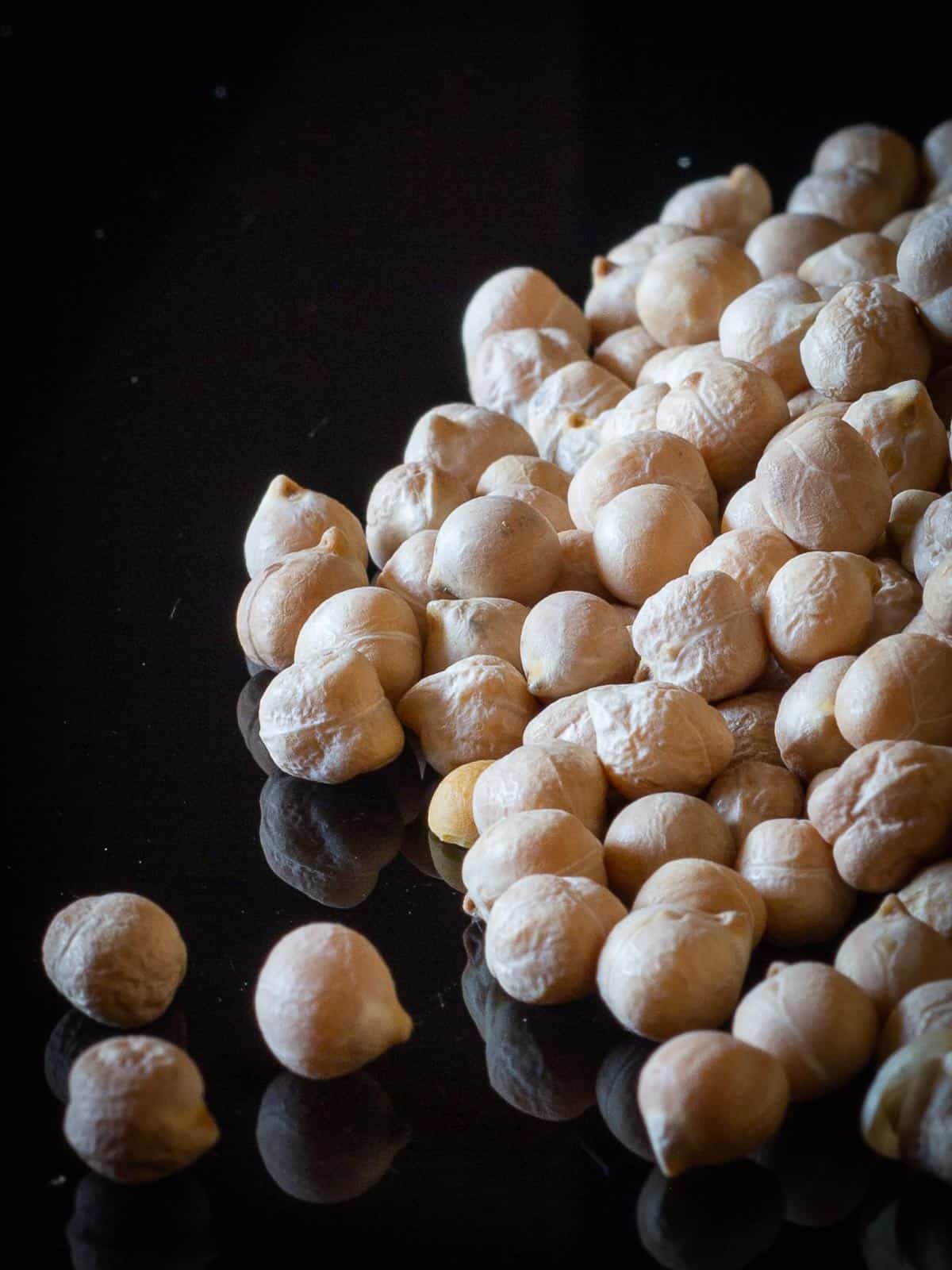
Different varieties of lentil seeds will need less or more time to sprout. So, lentils need less time than chickpeas.
Sprouting lentils: how to?
- Rinse lentils and put them in a flat pan. Let 7 ounces (200 grams) of lentils soak overnight. Depending on the size of the lentils, sprouting time can take anywhere from one to three days. Keep watering them until no more water is absorbed; let them close to a window where they can catch the sunshine.
- You can also put them in a mason jar, ensuring they always have some humidity and direct sunlight.
- After doubling their size, add a little water to hold some moisture and stir them.
- When you start seeing the sprouts, they are ready (feel free to leave them another day to become even softer).
You can consume them as they are in salads, cook them for no more than 3 minutes, or store them in the fridge. You can keep freshly harvested lentil sprouts in the refrigerator for up to one week.
Storage
The cold temperature within the fridge prevents bacteria from growing, which would otherwise decompose the stored lentil sprouts.
Use your sprouted lentils!
Want to know more about sprouting? Check this link.
As the lead content writer and recipe developer at Our Plant-Based World, he combines his passion for health and sustainability with a Plant-Based Nutrition Certification to create accessible, delicious vegan recipes. His expertise in plant-based cooking supports the blog's mission of fostering a healthier, environmentally conscious lifestyle through simple and seasonal dishes. His commitment to making vegan cooking enjoyable and inclusive for everyone shines in each recipe and article.




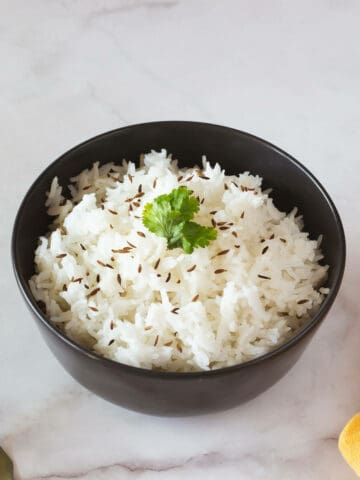

Priscilla Dee
Just learning about sprouts, and love your information and suggestions. Thank you !
Gus
Hey Priscilla,
So glad you're diving into the world of sprouts! They're little nutritional powerhouses, aren't they? 🌱 Thanks for the love; we're thrilled our info could guide you on your sprouting journey. If you have any more questions or need further tips, feel free to ask. Happy sprouting!
Cheers,
Gus & Joaco
Dannii
This is such an informative post. They will be great for salads too.
Juliane
Wow, thank you so much for this!
Gus
you are welcome! I hope you liked all the sprouting tips!
Savita
The sprouts look so good. Healthy and delicious.
Gus
We love using it in so many healthy dishes and salads.
Anita
I have only ever sprouted mung beans before and that was back in school for science project. Thanks for your detailed guide, I am now trying to sprout lentils (and probably mung beans too!) and add them to my cooking.
Gus
Spouting is such a nice way to add nutrition to our day-to-day meals! I am glad the post inspired you to make some lentil and mung beans sprouts again!
Katherine
Thank you for such a detailed guide to sprouting!
Gus
Thank you for your review, Katherine! I'm so happy to hear that our guide was helpful in your journey.
I hope you enjoy the rest of your week and please let us know if there's anything else we can do to help you on this sprouting journey.
Beth
That salad looks absolutely delicious. I can not wait to incorporate this concept in to my cooking. Thanks for all the great information.
Gus
Thanks Beth for your review. I'm so glad you enjoyed the salad and that it inspired you to try out some new recipes!
Natalie
Thank you for sharing this info. My husband was interested in sprouting last year but never gone past finding a sprouting jar. I'll forward him this article.
Gus
Thank you for your review Nathalie. I'm so glad to hear that this article was helpful and that it will help your husband get a head start on sprouting!
Gina
Only thing I've sprouted so far is broccoli seeds but I buy sprouted grains and beans all the time so I'm going to try this out now. Such good info in this post - thanks!
Danielle Wolter
I just love this! So many wonderful tips. It's something I've been meaning to do for a while.
Taly
Qué interesante y fácil de hacer!